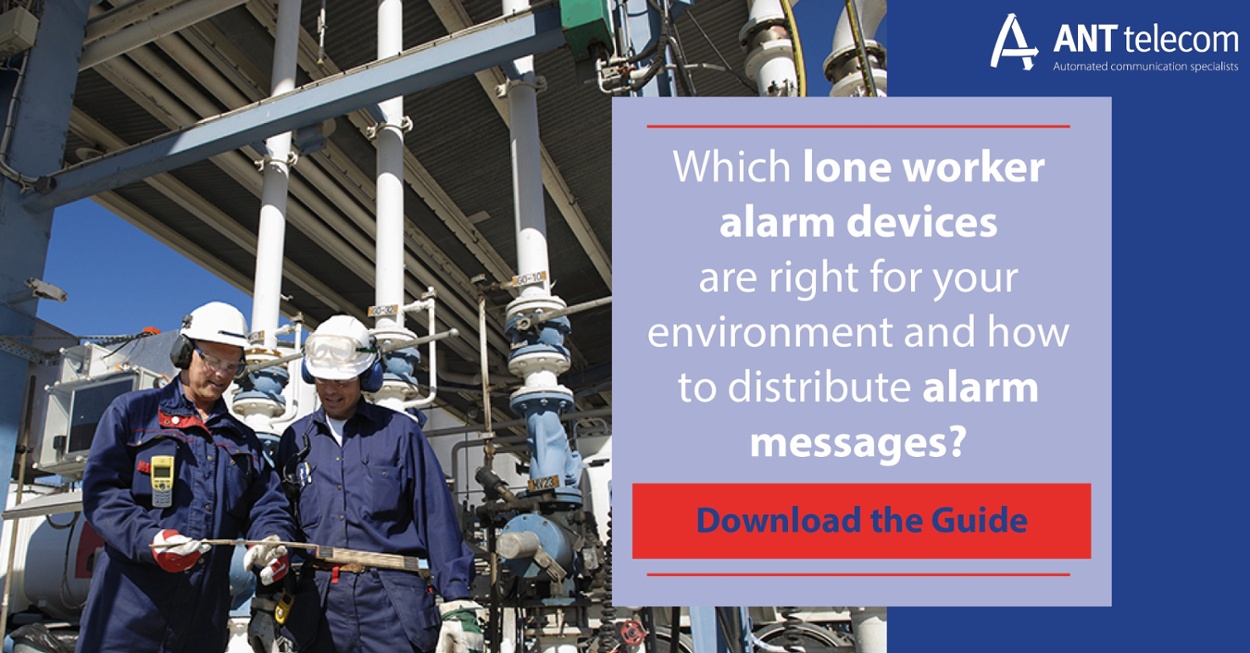
Lone worker devices are a vital resource when it comes to keeping staff that work alone safe at all times. Without contact or close supervision from other members of the team, lone workers are at a significantly increased risk as there are no other employees around to provide immediate assistance in the event of a fall, illness or other incident.
Therefore, users rely entirely on lone worker devices to have a continuous connection and work seamlessly, to ensure that in the event of an emergency they can trust in the technology and when an alarm is raised, it will be dealt with effectively.
However, when it comes to selecting a lone worker solution, faced with a growing number of cheap options on the market, how can heads of procurement ensure that they implement a system that fully addresses the needs of employees and the business as a whole? For a first time buyer, when reviewing their requirements they might consider that they have ten lone workers, so therefore need ten lone worker devices, but when selecting an appropriate solution, there are a lot of other factors to consider beyond the device itself.
Environment
With more than six million lone workers in the UK across a wide variety of industries, from manufacturing to healthcare, a good starting point is to assess the environment that the lone workers are situated in to evaluate what features and format would be most relevant. Will they be operating within a factory, a hospital, a warehouse or elsewhere? A nurse visiting patients within a town would be happy with a device on a tag, for example, as it does not necessarily need to be rugged. However, it would not suit someone working on a wind farm in Scotland as there would be no GSM coverage, and it would need to be weighty and ruggedised with a high volume level.
It’s also vital to understand as much as possible about what the employee’s role is so that the appropriate device functions are provided. For example, a lone worker app that is incorporated into a smartphone would not be suitable for a factory worker, as they require hardware that can withstand being dropped or can be utilised by someone wearing thick or dirty gloves. There are a number of options available which can be tailored to suit each working environment, so it’s important to identify which would be the most suitable for each individual setting in order to optimise the device for users.
Communication
As well as the environment they are working in, another consideration is how staff currently communicate with their colleagues, suppliers and customers. With technological innovations, lone worker devices are no longer limited to just being an alarming mechanism but can now be multi-functional and address other business challenges, in addition to worker safety. Rather than employees having to carry several devices around with them for different functions, there are opportunities for businesses to provide functions such as comms, lone worker and messaging all on the same device.
Furthermore, if there is already a communications system in place, but no lone worker function, the existing solution can potentially be enhanced cost effectively to protect lone workers, instead of completely overhauling the entire setup.
Cost
Cost is also an important factor for the majority of organisations and with a number of cheap solutions that have recently flooded the market from overseas, it’s easy to see why first time buyers could be tempted to go with the cheapest option. However, when purchasing a system that workers’ lives depend on, it’s vital that business have complete confidence that a device has been fully tested and certified. A device purchased from overseas on the internet is unlikely to instil confidence in the workforce it is supposed to help protect. By working with a supplier that is an expert within the industry, they can help to assess a business’ requirements in detail to ensure that they get a suitable solution that fits their individual needs, and integrating systems where possible, instead of a ‘one device fits all’ approach.
Protocol
In addition to the hardware, it’s imperative that businesses implement appropriate procedures that staff must follow in the event of a workplace incident. When an alarm is triggered it is fundamental to have a robust and reliable process in place to ensure those receiving the alert can act and deal with the immediate danger, responsibly. Responding effectively to critical alarms is a key part of the solution and cannot be taken lightly. Lone worker devices can trigger alerts by ringing a number or sending a text message, but this alone is not enough and does not ensure that a recipient has seen the message and is acting upon it. When someone’s life is depending on a swift response, it is critical that alarms can escalate until they are acknowledged, to ensure the incident is managed. Businesses must make sure that staff understand why the solution has been put in place and that they are well practiced in using the device and how to respond, should an emergency arise.
Monitoring the use and effectiveness of the lone worker devices is vital to evaluate how useful the solution is and to make sure that employees continue to use the technology. It’s also important to continually keep track of any changes in the working environment, such as additional lone workers or tasks, so that each employee is adequately protected and trusts in the system to keep them safe.
With a variety of options available when it comes to lone working, it’s important for companies to remember that one particular device that is suitable for one area of the business, is not necessarily right to roll out across the entire workforce. This could be for numerous reasons including differing job roles, different environments and availability of signal. Therefore, a business that is looking to procure a lone worker solution must consider several elements to ensure that the end result fully addresses their individual requirements.





